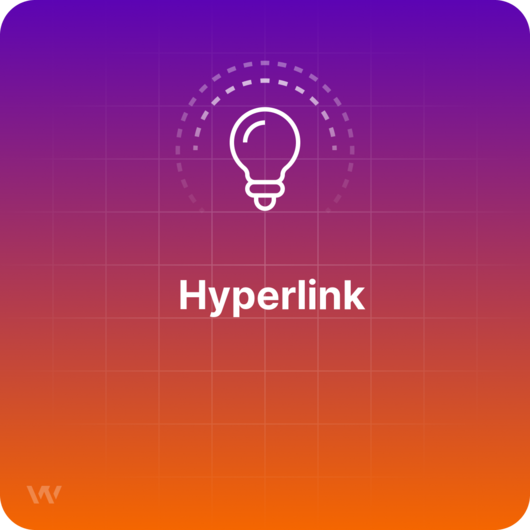Hyperlink

TL;DR
A hyperlink (or simply a link) is a reference from one web page to another. Clicking a hyperlinked element (text, images, buttons) sends the user to a different webpage, that may have additional information or related content on it. Hyperlinks have a strong effect on page and domain authority.
What is a hyperlink and how can you use one?
A hyperlink is a website reference to another web page. By clicking the hyperlink, the user is directed to another connected piece of content, that can serve as a source quotation, as a “more info” page, as a “related info” page, a page where a user can take a further action (registering, signing in) or any other type of content that can somehow relate to the one being displayed.
Hyperlinks can be placed on a number of website elements, like images, texts or buttons. All of these elements can be highlighted when hovered over, and most of the time, the cursor changes from an arrow to a pointing hand. Most of the time the hyperlink text is blue or underlined. This isn’t a general rule, but it is recommended because this way the reader is aware that if they click they will be directed to a new section or website.
Hyperlinks can link either to an external resource (outbound links), or to an internal resource on the website (inbound links). Hyperlinks are important for several reasons. First of all, they organize content, making it easier to find by users and search engines. Second of all, they are a strong indicator of page and domain authority. Links from one page to another within the same website may slightly strengthen the authority of a certain web page. Also, the more hyperlinks there are on other websites linking back to your website, the higher your domain authority will be. These are often called backlinks.

